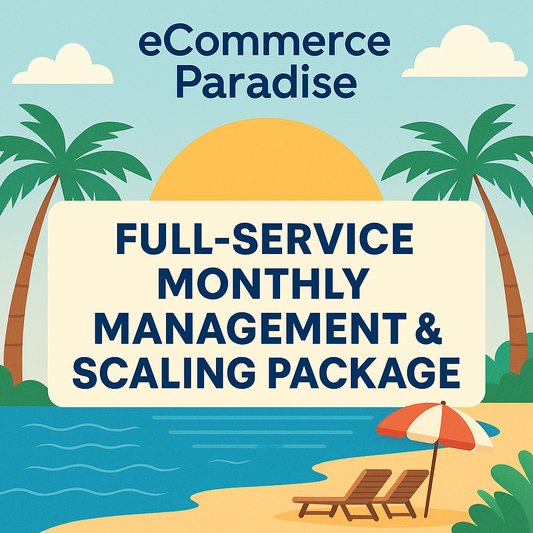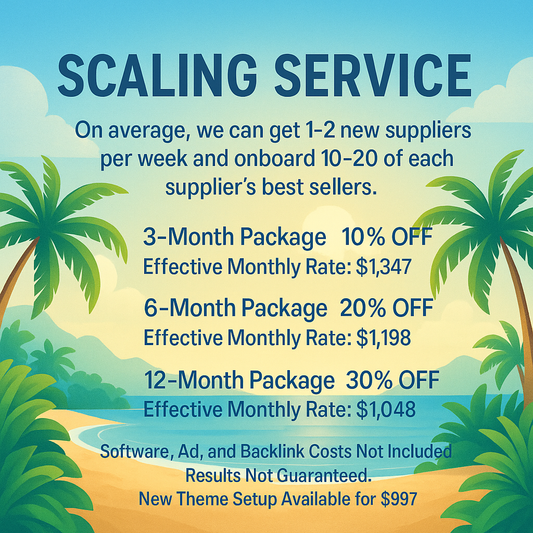
The Power of Mobile Optimization for Your Ecommerce SEO
Hey there, fellow ecommerce enthusiasts! It's Trevor Fenner from Ecommerce Paradise. Today, we’re diving deep into a hot topic that can significantly influence your online store's performance: mobile optimization. As we navigate the ever-evolving landscape of ecommerce, understanding the importance of mobile optimization is crucial for boosting your SEO, driving traffic, and ultimately increasing sales. Let’s get into it!
Why Mobile Optimization Matters
In today's digital age, consumers are more connected than ever, and a significant portion of their shopping takes place on mobile devices. With the rise of smartphones and tablets, having a mobile-optimized ecommerce site is no longer just an option—it's a necessity. Here are a few reasons why mobile optimization should be front and center in your ecommerce strategy:
1. Growing Mobile Shopping Trends
Statistics show that mobile commerce sales are projected to reach over $400 billion by the end of the year. This staggering number reflects how much more consumers are turning to their mobile devices to shop. If your ecommerce site isn’t optimized for mobile, you risk losing a significant amount of potential sales. Invest in mobile optimization to captivate these shoppers, enhance their user experience, and drive higher conversion rates.
2. Google’s Mobile-First Indexing
Google has shifted its focus to mobile-first indexing, meaning that the search engine primarily uses the mobile version of your site for ranking and indexing. If your site is not mobile-friendly, you may find it struggling to rank on search engine results pages (SERPs). This is where the importance of Ecommerce SEO comes into play. By ensuring your site is mobile-optimized, you'll improve your chances of ranking higher in Google, enhancing visibility and increasing organic traffic.
How to Optimize Your Ecommerce Site for Mobile
Now that we’ve established the vital role mobile optimization plays, let’s discuss practical steps you can take to ensure your ecommerce site is fully optimized.
User Experience is Key
Creating an intuitive and seamless user experience is essential on mobile devices. Here are some best practices to enhance UX:
- Responsive Design: Ensure your site has a responsive design that adapts to various screen sizes, from smartphones to tablets.
- Fast Load Times: Optimize your images and scripts to ensure that your site loads quickly. Mobile users are often on the go; they won't wait long for pages to load!
- Easy Navigation: Simplify your navigation to ensure users can find what they’re looking for quickly. Think about thumb-friendly buttons and straightforward menus.
- Readable Fonts: Make sure your text is large enough to read without zooming in. A good rule of thumb is to use at least 16 pixels for body text.
Optimize for SEO
As we mentioned before, mobile optimization is directly tied to SEO. Here are some crucial SEO strategies to consider:
- Mobile-Friendly Testing: Use Google’s Mobile-Friendly Test tool to check how easily a visitor can use your page on a mobile device.
- Improve Page Speed: Utilize tools like Google PageSpeed Insights to identify and fix any issues that may slow down your site.
- Structured Data Markup: Implement structured data to help search engines understand your content better, improving your chances for rich snippets in search results.
- Keywords Optimization: Research and integrate high-performing keywords relevant to your niche, including “Google Shopping Ads” and “Email Marketing,” to further bolster your site's visibility.
Seamlessly Integrating into Your Marketing Strategy
Mobile optimization doesn’t just impact your ecommerce site; it also extends to your broader marketing strategy. Here are ways to align your efforts:
Email Marketing
If you’re leveraging email marketing as a means to promote your products, ensure your emails are optimized for mobile. A large percentage of emails are opened on mobile devices, so your emails need to be visually appealing and straightforward to read. Use responsive templates that adjust to fit the screen and ensure that any call-to-action buttons stand out and are easily clickable.
Google Shopping Ads
When you run Google Shopping Ads, potential customers are often viewing these ads on their mobile devices. Make sure that the linked landing pages from your ads are fully optimized for mobile. A seamless transition from ad to product page will enhance user experience and lead to higher conversion rates.
Common Mobile Optimization Mistakes to Avoid
While optimizing for mobile, you might encounter some common pitfalls. Here are a few mistakes to avoid to ensure your ecommerce site remains user-friendly:
- Ignoring Mobile Analytics: Failure to track how mobile users interact with your site can lead you to overlook critical improvements.
- Cluttered Design: Overcrowded screens can confuse users. Aim for a clean, minimal design that communicates your brand effectively.
- Forgetting About Touchscreen Usability: Mobile users interact via touch, so buttons need to be big enough to tap easily without accidental clicks.
Adapting to Future Trends
As technology continues evolving, so do user expectations. It's crucial to stay ahead of the curve and adapt to emerging trends in mobile commerce. Here are a few trends to keep an eye on:
Voice Search
With the increasing use of voice-activated devices, optimizing for voice search is becoming vital. Focus on conversational SEO keywords and phrases that consumers would likely use when searching verbally. This optimization can significantly boost your visibility in searches conducted via mobile.
Augmented Reality (AR)
Integrating AR into your mobile ecommerce experience can set you apart from competitors. Allowing customers to visualize products in their own space can enhance their shopping experience and lead to more sales.
Your Mobile Optimization Checklist
To recap, here's a handy checklist to ensure that your ecommerce site is mobile-optimized:
- ✔️ Responsive design that adapts to different screens
- ✔️ Fast load times and optimized images
- ✔️ Simplified navigation and readable fonts
- ✔️ Mobile-friendly SEO strategies implemented
- ✔️ Engaging email templates for mobile users
- ✔️ Regularly reviewed analytics to identify areas for improvement
Ready to Take the Leap?
As you can see, the importance of mobile optimization cannot be overstated. From enhancing user experience to boosting your SEO and driving sales, the benefits are immense. Remember, in ecommerce, the customer experience is everything, and a mobile-optimized site can make all the difference.
So, what are you waiting for? Get started on optimizing your ecommerce site for mobile today, and watch how it transforms your business! Until next time, happy selling!


















